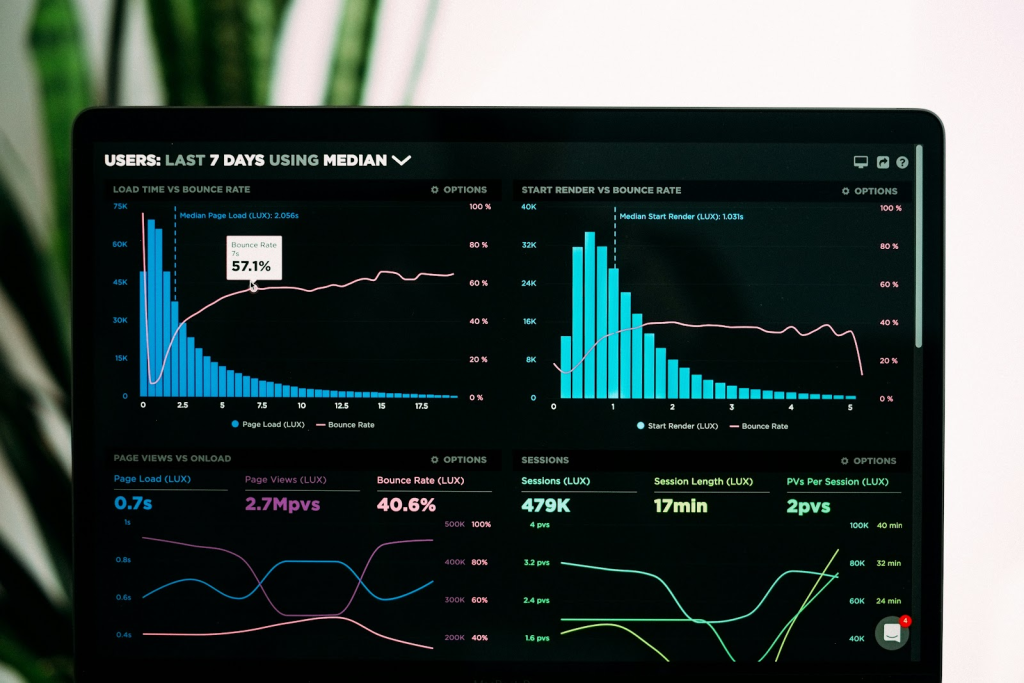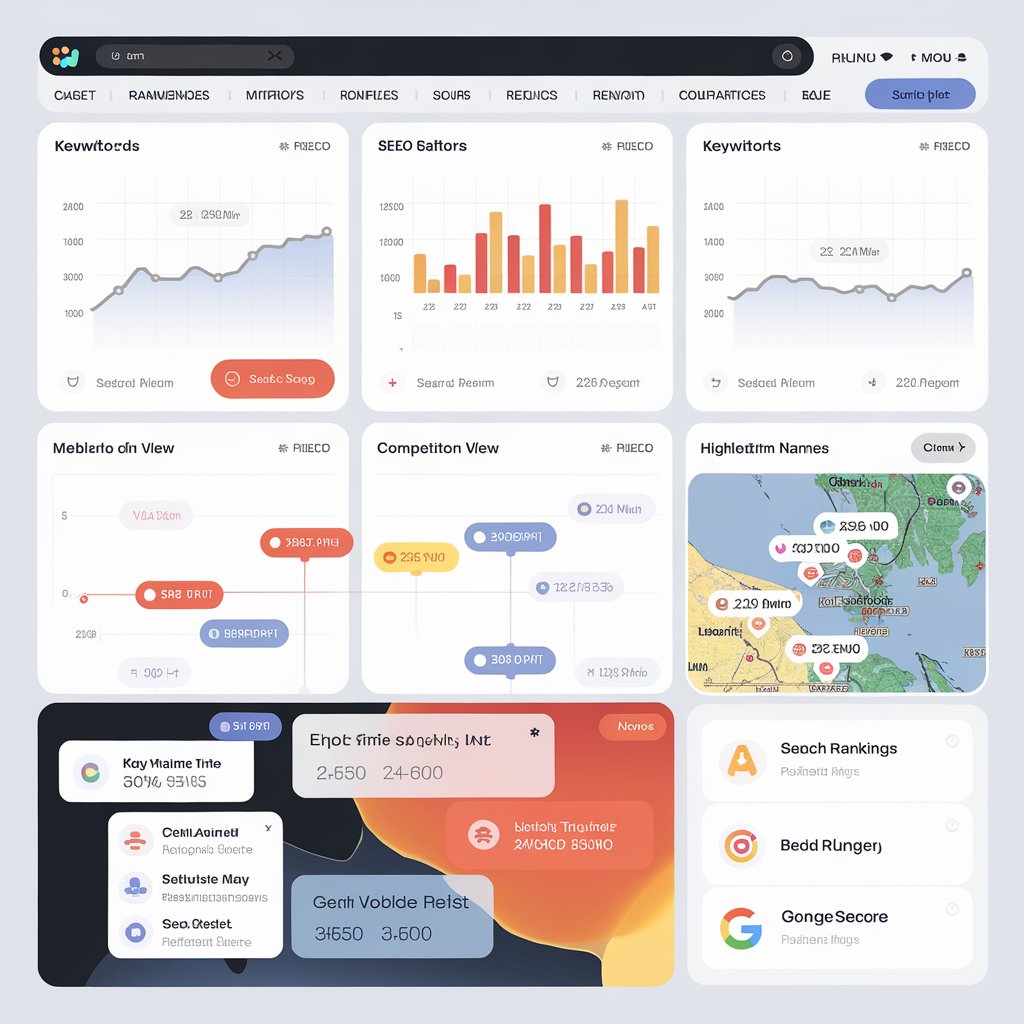How to Monitor Your Daily SEO Rankings

For businesses, this means showing up on search engine results pages (SERPs). But how do you know if your website is visible to your target audience? The answer lies in monitoring your daily SEO rankings. SEO, or Search Engine Optimization, is a crucial part of digital marketing. It involves optimizing your website to rank higher on SERPs.
The higher your website ranks, the more likely it is to be seen by potential customers. But SEO is not a one-time task. It requires constant monitoring and adjustment to keep up with changes in search engine algorithms and competition. This is where daily SEO rankings come into play. By tracking your SEO rankings daily, you can gain insights into how well your website is performing.

You can see which keywords are driving traffic to your site. You can identify trends and patterns that can inform your SEO strategy. And you can spot any sudden drops in rankings, allowing you to take corrective action before it impacts your business. But how do you monitor your daily SEO rankings effectively?
What tools should you use, and what metrics should you track? In this comprehensive guide, we will answer these questions and more. We will explore the importance of daily SEO rankings, the process of setting up for SEO rank tracking, and how to respond to SEO ranking changes.
We will also delve into advanced SEO rank tracking techniques and discuss common challenges and best practices in SEO rank tracking. Whether you’re an SEO professional, a digital marketer, a website owner, or simply someone interested in improving your website’s visibility, this guide is for you. So, let’s dive in and learn how to monitor your daily SEO rankings effectively.
Understanding Daily SEO Rankings
Before we delve into the how-to of monitoring daily SEO rankings, let’s first understand what they are. SEO rankings, also known as search engine rankings, refer to the position of your website on SERPs. When a user types a query into a search engine, the search engine uses complex algorithms to determine which websites are most relevant to the query. The websites deemed most relevant are displayed on the first page of the search results, with the most relevant at the top.

Your SEO ranking is determined by a variety of factors. These include the quality of your content, the relevance of your keywords, the number of backlinks to your site, and the overall user experience your site provides. By monitoring your SEO rankings daily, you can keep track of how these factors are affecting your visibility on search engines.
You can see how changes to your website or updates to search engine algorithms are impacting your rankings. And you can identify opportunities to improve your SEO strategy and boost your rankings. But why does this matter? Let’s explore this in the next section.
Why Daily SEO Rankings Matter
In the world of SEO, change is the only constant. Search engine algorithms are updated frequently, and your competitors are always tweaking their strategies to get ahead. This means that your SEO rankings can fluctuate from day to day. By monitoring your SEO rankings daily, you can stay on top of these changes and respond quickly.

For example, if you notice a sudden drop in your rankings, you can investigate the cause and take corrective action. This could involve fixing technical issues on your site, updating your content, or adjusting your keyword strategy. On the other hand, if you see a boost in your rankings, you can analyze what you did right and replicate it.
Monitoring your SEO rankings daily also allows you to measure the effectiveness of your SEO efforts. You can see which strategies are working and which ones need tweaking. In short, daily SEO rankings provide valuable insights that can inform your SEO strategy and help you achieve your business goals.
The Impact of SEO Rankings on Your Business
But what does this mean for your business? Well, your SEO rankings can have a significant impact on your bottom line. The higher your website ranks on SERPs, the more visibility it has. And the more visibility it has, the more likely it is to attract clicks from potential customers. In fact, studies show that the first page of Google search results captures 71% of clicks.
This means that if your website is not on the first page, you’re missing out on a significant amount of potential traffic. And without traffic, you can’t generate leads, make sales, or achieve your business goals.
In other words, your SEO rankings directly affect your business outcomes. By monitoring your SEO rankings daily, you can ensure that your website stays visible and continues to drive business results. In the next section, we’ll discuss how to set up for SEO rank tracking.
Setting Up for SEO Rank Tracking
Now that we understand the importance of daily SEO rankings, let’s discuss how to set up for SEO rank tracking. The first step in this process is choosing the right keywords to track. This is crucial because your choice of keywords will determine the relevance of your SEO efforts.

If you target the wrong keywords, you may end up attracting the wrong audience. Or worse, you may not attract any audience at all. So, how do you choose the right keywords to track? Let’s explore this in the next section.
Choosing the Right Keywords to Track
Choosing the right keywords to track starts with understanding your audience. You need to know what terms your potential customers are using to search for your products or services. These are the keywords you should be targeting.

There are several ways to identify these keywords. One is to use keyword research tools. These tools can show you what keywords are popular in your industry, how competitive they are, and how often they’re searched for. Another way is to analyze your competitors. See what keywords they’re targeting and how they’re ranking for them.
This can give you ideas for keywords you might want to target. You should also consider the intent behind the keywords. Are users looking for information, or are they ready to make a purchase? Targeting keywords with different intents can help you attract users at different stages of the buying cycle. Finally, don’t forget about long-tail keywords.
These are longer, more specific phrases that often have less competition and a higher conversion rate. Once you’ve chosen your keywords, the next step is to set up your SEO rank tracking tools. Let’s discuss this in the next section.
Tools and Software for Daily SEO Rank Tracking
There are many tools and software available for SEO rank tracking. These tools can automate the process of tracking your SEO rankings, saving you time and effort. They can also provide valuable insights into your SEO performance, helping you make informed decisions.

When choosing an SEO rank tracking tool, there are several factors to consider. One is the accuracy of the data. You want a tool that provides reliable, up-to-date information about your SEO rankings. Another factor is the ease of use. The tool should be user-friendly and intuitive, allowing you to easily set up and manage your SEO rank tracking.
The tool should also provide comprehensive reports. These reports should include not only your SEO rankings, but also other important metrics like organic traffic, bounce rate, and conversion rate.

Finally, consider the cost of the tool. While some tools offer free versions, these often have limited features. Paid tools, on the other hand, offer more advanced features and capabilities. However, they can be expensive, so you’ll need to weigh the cost against the benefits. Once you’ve chosen your SEO rank tracking tool, you’re ready to start monitoring your daily SEO rankings. In the next section, we’ll discuss the daily rank checking process.
The Daily Rank Checking Process
Monitoring your daily SEO rankings is not a one-time task. It’s a continuous process that requires a consistent and systematic approach. In this section, we’ll discuss how to set up a daily SEO tracking routine and how to interpret your daily SEO rankings data. Let’s start with setting up a daily SEO tracking routine.
How to Set Up a Daily SEO Tracking Routine
Setting up a daily SEO tracking routine involves several steps. First, you need to decide what time of day you’ll check your rankings. This should be a time when you can focus and analyze the data without distractions. Next, you need to decide what metrics you’ll track. These could include your overall SEO ranking, the ranking of specific keywords, or the ranking of specific pages on your website.

You should also decide how you’ll track these metrics. Will you use an SEO rank tracking tool, or will you manually check your rankings on search engines? Once you’ve decided on these details, you can start your daily SEO tracking routine.
Here’s a simple routine you could follow:
- Check your overall SEO ranking.
- Check the ranking of your target keywords.
- Check the ranking of your top-performing pages.
- Analyze any changes in your rankings.
- Make notes of any trends or patterns you observe.
- Plan any necessary actions based on your analysis.
By following this routine, you can stay on top of your SEO performance and quickly respond to any changes in your rankings. Now that we’ve discussed how to set up a daily SEO tracking routine, let’s move on to interpreting your daily SEO rankings data.
Interpreting Your Daily SEO Rankings Data
Interpreting your daily SEO rankings data is a crucial part of the SEO rank tracking process. This data can provide valuable insights into your SEO performance and help you make informed decisions. However, interpreting this data can be challenging, especially if you’re new to SEO.

Here are some tips to help you interpret your daily SEO rankings data:
- Look for trends and patterns. Are your rankings consistently improving, declining, or fluctuating?
- Analyze the impact of your SEO efforts. Are your rankings improving after implementing certain SEO strategies?
- Compare your rankings with your competitors’. Are you ranking higher or lower for certain keywords?
- Consider the impact of search engine algorithm updates. Have your rankings changed after a major update?
- Look at the bigger picture. Don’t focus solely on your rankings. Consider other metrics like organic traffic, bounce rate, and conversion rate.

By interpreting your daily SEO rankings data, you can gain a deeper understanding of your SEO performance. This can help you identify areas of improvement, make informed decisions, and ultimately improve your SEO rankings. In the next section, we’ll discuss how to respond to SEO ranking changes.
Responding to SEO Ranking Changes
SEO rankings are not static. They can change daily due to various factors such as search engine algorithm updates, competitor activities, and changes in user behavior. Therefore, it’s important to know how to respond to these changes effectively.
In this section, we’ll discuss the difference between short-term fluctuations and long-term trends in SEO rankings. We’ll also share some strategies for improving your SEO rankings. Let’s start with understanding the difference between short-term fluctuations and long-term trends.
Short-Term Fluctuations vs. Long-Term Trends
SEO rankings can fluctuate on a daily basis. These short-term fluctuations are normal and are often due to factors such as algorithm updates, changes in search demand, or temporary issues with your website.

However, if you notice a consistent decline in your rankings over a longer period, this could indicate a long-term trend. Long-term trends in SEO rankings are often due to more significant issues such as a penalty from search engines, a loss of backlinks, or a decrease in the quality of your content.
Here are some tips to help you differentiate between short-term fluctuations and long-term trends:
- Monitor your rankings over a longer period. Don’t panic over daily fluctuations.
- Look for consistent patterns. If your rankings are consistently declining over several weeks or months, this could indicate a long-term trend.
- Consider the impact of external factors. Major algorithm updates or changes in search demand can cause short-term fluctuations.
- Analyze your SEO efforts. If you’ve recently made changes to your website or SEO strategy, this could impact your rankings.
By understanding the difference between short-term fluctuations and long-term trends, you can respond to changes in your SEO rankings more effectively. Now, let’s move on to some strategies for improving your SEO rankings.
Strategies for Improving Your SEO Rankings
Improving your SEO rankings requires a strategic and systematic approach.
Here are some strategies that can help:
- Optimize your website for relevant keywords. Use keywords that your target audience is searching for and that are relevant to your business.
- Create high-quality content. Content that is valuable, unique, and engaging can help improve your SEO rankings.
- Build high-quality backlinks. Backlinks from reputable websites can boost your SEO rankings.
- Improve your website’s user experience. A website that is easy to navigate, fast, and mobile-friendly can help improve your SEO rankings.
- Stay updated with SEO best practices. SEO is constantly evolving, so it’s important to stay updated with the latest trends and best practices.

Remember, improving your SEO rankings takes time and patience. Don’t expect immediate results. Instead, focus on implementing these strategies consistently and monitoring your progress over time. In the next section, we’ll discuss some advanced SEO rank tracking techniques.
Advanced SEO Rank Tracking Techniques
SEO rank tracking is not just about monitoring your own website’s rankings. It also involves tracking your competitors’ rankings and using your rank tracking data for content optimization. In this section, we’ll discuss these advanced SEO rank tracking techniques. These techniques can provide you with deeper insights and help you make more informed decisions about your SEO strategy. Let’s start with tracking and analyzing competitor rankings.
Tracking and Analyzing Competitor Rankings
Keeping an eye on your competitors’ SEO rankings can provide valuable insights. It can help you understand the competitive landscape, identify gaps in your own strategy, and uncover new opportunities.
Here’s how you can track and analyze competitor rankings:
- Identify your main competitors. These could be businesses that offer similar products or services, or websites that rank highly for your target keywords.
- Use an SEO rank tracking tool. Many tools allow you to track your competitors’ rankings for specific keywords.
- Analyze your competitors’ SEO strategies. Look at their website structure, content, backlinks, and other SEO factors.
- Look for gaps and opportunities. Identify areas where your competitors are doing well and where they’re falling short.
Remember, the goal of tracking competitor rankings is not to copy their strategies. Instead, it’s to gain insights that can help you improve your own SEO strategy. Now, let’s move on to leveraging SEO rank tracking for content optimization.
Leveraging SEO Rank Tracking for Content Optimization
Your SEO rank tracking data can provide valuable insights for content optimization. It can help you understand which content is performing well, which content needs improvement, and what new content you should create.
Here’s how you can leverage SEO rank tracking for content optimization:
- Identify high-performing content. Look at which pages are ranking highly for your target keywords.
- Analyze this content. What topics does it cover? What keywords does it target? What makes it successful?
- Identify low-performing content. Look at which pages are not ranking well or have dropped in rankings.
- Improve this content. Update the content, optimize it for relevant keywords, improve its readability, etc.
- Use your rank tracking data to inform new content. Create new content that targets keywords you’re not currently ranking for.

Remember, content optimization is an ongoing process. You should regularly review your SEO rank tracking data and use it to continuously improve your content. In the next section, we’ll discuss SEO rank tracking and reporting.
SEO Rank Tracking and Reporting
SEO rank tracking is not a one-time task. It’s an ongoing process that requires regular monitoring and analysis. To make this process easier and more efficient, you can set up alerts and notifications for ranking changes.
You can also create custom reports and dashboards to visualize your SEO rank tracking data. In this section, we’ll discuss how to set up alerts and notifications and how to create custom reports and dashboards. Let’s start with setting up alerts and notifications for ranking changes.
Setting Up Alerts and Notifications for Ranking Changes
Alerts and notifications can help you stay on top of your SEO rankings. They can notify you of significant changes in your rankings, allowing you to respond quickly.
Here’s how you can set up alerts and notifications for ranking changes:
- Choose an SEO rank tracking tool that offers alerts and notifications.
- Set up alerts for significant ranking changes. This could be a certain number of positions or a change in your average ranking.
- Customize your alerts. You can choose to receive alerts for specific keywords, pages, or competitors.
- Choose how you want to receive your alerts. This could be via email, SMS, or in-app notifications.

Remember, alerts and notifications are a tool to help you monitor your SEO rankings. They’re not a substitute for regular, in-depth analysis of your SEO rank tracking data. Now, let’s move on to creating custom reports and dashboards.
Creating Custom Reports and Dashboards
Custom reports and dashboards can help you visualize your SEO rank tracking data. They can make it easier to understand your data, identify trends, and communicate your results to others.
Here’s how you can create custom reports and dashboards:
- Choose an SEO rank tracking tool that offers custom reporting and dashboards.
- Decide what data you want to include in your reports. This could be your overall rankings, rankings for specific keywords, competitor rankings, etc.
- Customize your dashboard. You can choose to display your data in different formats, such as charts, tables, or graphs.
- Share your reports. You can export your reports as PDFs, share them via email, or present them in meetings.
Remember, the goal of custom reports and dashboards is to help you understand and communicate your SEO rank tracking data. They should be clear, concise, and relevant to your SEO goals. In the next section, we’ll discuss common challenges and best practices in SEO rank tracking.
Common Challenges and Best Practices in SEO Rank Tracking
SEO rank tracking is not without its challenges. From data accuracy issues to understanding ranking fluctuations, there are several obstacles you may encounter. However, with the right strategies and best practices, you can overcome these challenges and effectively monitor your daily SEO rankings.
In this section, we’ll discuss common SEO rank tracking challenges and how to overcome them. We’ll also share best practices for accurate and effective rank tracking. Let’s start with common SEO rank tracking challenges.
Overcoming Common SEO Rank Tracking Challenges
One common challenge in SEO rank tracking is data accuracy. SEO rank tracking tools may show different rankings for the same keyword. This can be due to factors like location, device type, and personalization. To overcome this challenge, use multiple rank tracking tools and compare the results.

Another challenge is understanding ranking fluctuations. SEO rankings can fluctuate due to algorithm updates, competitor activity, and other factors. To understand these fluctuations, monitor your rankings regularly and analyze the data over time.
Here’s a list of common SEO rank tracking challenges and how to overcome them:
- Data accuracy: Use multiple rank tracking tools and compare the results.
- Ranking fluctuations: Monitor your rankings regularly and analyze the data over time.
- Keyword selection: Choose relevant keywords that align with your SEO goals.
- Data interpretation: Understand the factors that influence SEO rankings and how to interpret your rank tracking data.
Now, let’s move on to best practices for accurate and effective rank tracking.
Best Practices for Accurate and Effective Rank Tracking
Accurate and effective rank tracking requires a strategic approach.
Here are some best practices to help you achieve this:
- Track both branded and non-branded keywords. This can give you a more comprehensive view of your SEO performance.
- Monitor your rankings at the same time each day. This can help you identify patterns and trends in your rankings.
- Use a daily rank checker for immediate insights. This can help you respond quickly to ranking changes.
- Analyze your competitors’ rankings. This can give you insights into their SEO strategies and help you identify opportunities for improvement.

Remember, SEO rank tracking is not just about monitoring your rankings. It’s about understanding what these rankings mean for your SEO performance and how you can improve. In the next section, we’ll discuss the future of SEO rank tracking and how to prepare for changes and stay ahead.
The Future of SEO Rank Tracking
The world of SEO is ever-evolving. As search engines become more sophisticated, so do the techniques for tracking SEO rankings. In this section, we’ll explore the future of SEO rank tracking. We’ll discuss emerging trends and technologies in SEO. We’ll also share tips on how to prepare for changes and stay ahead. Let’s start with emerging trends and technologies in SEO.
Emerging Trends and Technologies in SEO
Artificial Intelligence (AI) and machine learning are revolutionizing SEO. These technologies can help predict ranking changes and optimize SEO strategies.

Voice search is another growing trend. As more people use voice assistants, optimizing for voice search queries is becoming crucial. Mobile-first indexing is also shaping the future of SEO. With this, Google predominantly uses the mobile version of a website for indexing and ranking. This emphasizes the importance of a mobile-friendly website. Now, let’s discuss how to prepare for these changes and stay ahead.
Preparing for Changes and Staying Ahead
Staying ahead in SEO requires adaptability. You need to keep up with the latest trends and adjust your strategies accordingly.
Here are some tips to help you prepare for changes and stay ahead:
- Stay updated with SEO news and trends. This can help you anticipate changes and adapt your strategies.
- Regularly audit your website. This can help you identify areas for improvement and keep your website optimized.
- Invest in SEO training. This can help you and your team stay updated with the latest SEO techniques.
- Test and experiment. Don’t be afraid to try new strategies and learn from the results.

Remember, the future of SEO is not set in stone. It’s shaped by technological advancements, user behavior, and search engine updates. By staying updated and adaptable, you can navigate the future of SEO rank tracking with confidence. In the next section, we’ll wrap up with a recap of key points and final thoughts.
Conclusion
We’ve covered a lot of ground in this guide. From understanding the importance of daily SEO rankings to setting up for SEO rank tracking. We’ve also delved into the process of daily rank checking and responding to SEO ranking changes. We’ve explored advanced SEO rank tracking techniques and discussed SEO rank tracking and reporting. Finally, we’ve addressed common challenges and best practices in SEO rank tracking and looked at the future of SEO rank tracking.
Recap of Key Points
Monitoring your daily SEO rankings is crucial for understanding your website’s performance. Choosing the right keywords and using the right tools can make this process more effective. Interpreting your SEO rankings data and responding to changes can help improve your rankings. Advanced techniques like competitor analysis and content optimization can give you an edge. Staying updated with SEO trends and preparing for changes is key for future success.
Final Thoughts and Next Steps
SEO rank tracking is not a one-time task. It’s an ongoing process that requires consistency and adaptability. With the right approach and tools, you can effectively monitor your daily SEO rankings. This can provide valuable insights into your website’s performance and help you make informed decisions. So, start tracking your SEO rankings today and see the difference it can make.



